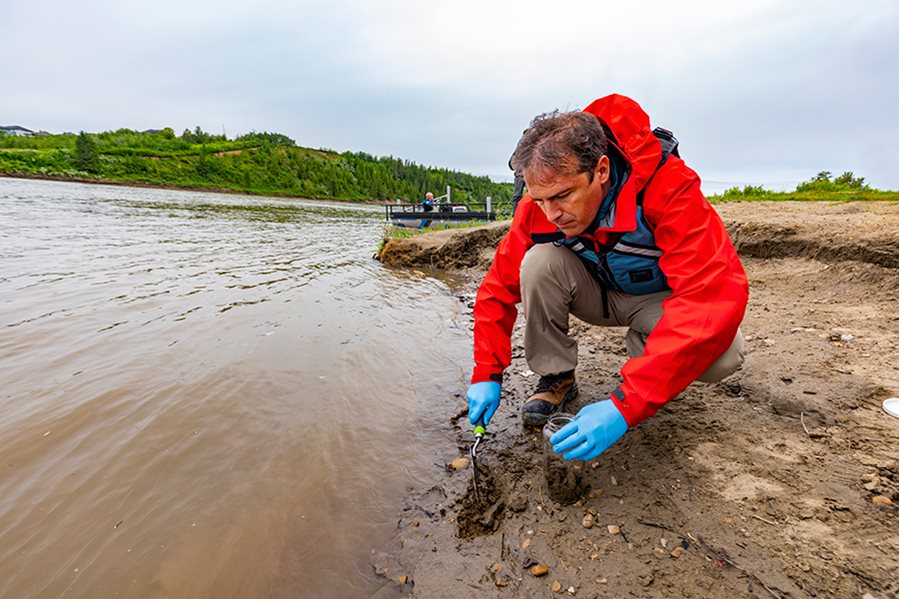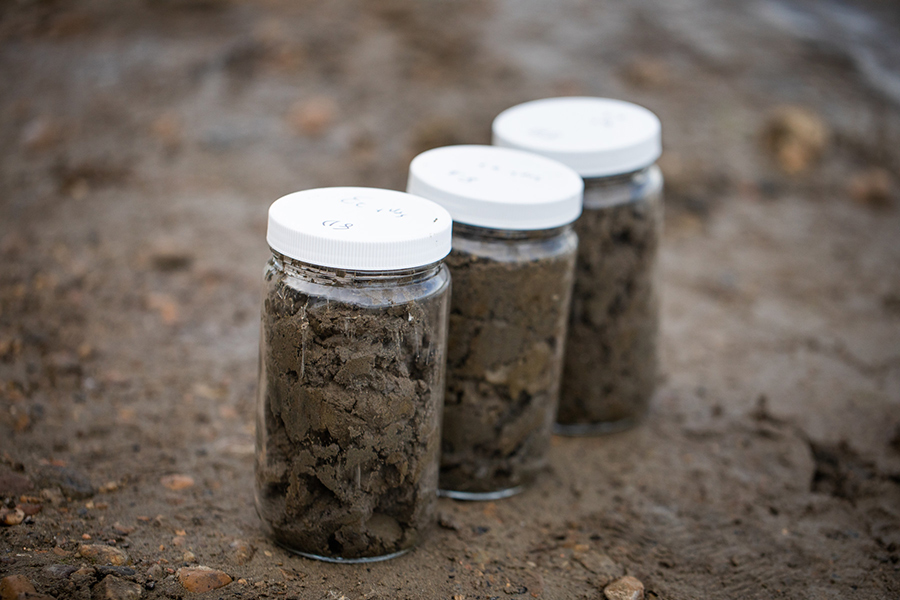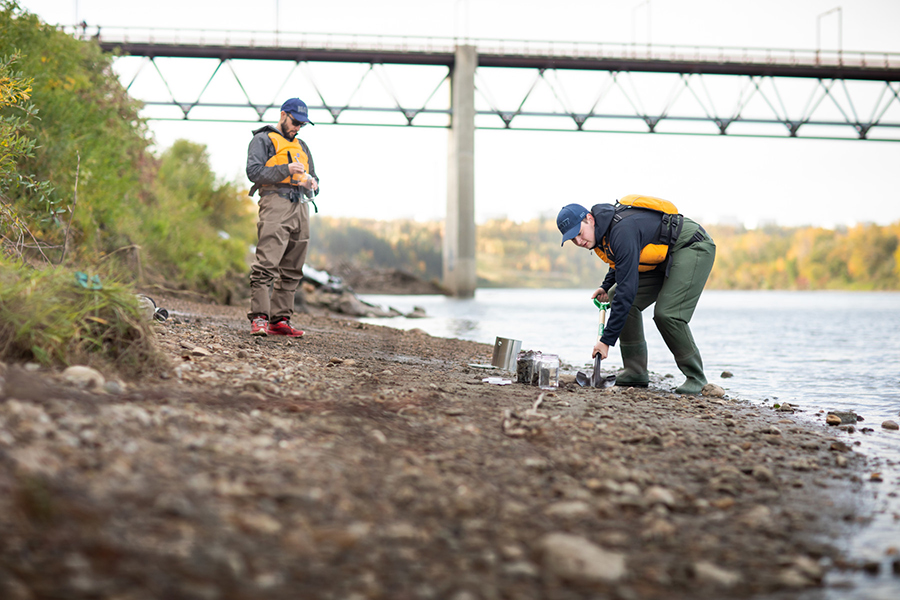Dr. Paolo Mussone leads three-year study
A NAIT research team has collected the largest store of freshwater and river sediment samples west of the Great Lakes as they work to understand how microplastics – small plastic particles less than five millimetres long – are impacting the glacier-fed North Saskatchewan River.
The pioneering research could one day help scientists protect the health of freshwater lakes, rivers and other bodies of water.
“Much is still unknown about microplastics and their impact on water systems largely because of a lack of data points to work with,” explains project lead Dr. Paolo Mussone, chair of Applied Bio/Nanotechnology Industrial Research.

According to Mussone, the miniscule plastic particles form when waste plastics break down. The microplastics end up in the environment, including bodies of water such as freshwater lakes, rivers and oceans.
Scientists haven’t landed on universally accepted methods for extracting microplastics from water or sediment samples, Mussone says. That’s the first step in identifying and analyzing specific types of microplastics to fully understand the scope of the problem.
“Much is still unknown about microplastics and their impact on water systems.”
Scientists also don’t know how microplastics interfere with natural environmental processes, such as carbon and nitrogen cycles in the soil, which are vital to organisms living in water systems.
"Essentially, our research project will look to address these gaps and provide a base for future microplastics research.”

Collecting samples from the North Saskatchewan
This past summer, Mussone’s team collected more than 144 water and sediment samples from 12 different locations along the North Saskatchewan River. The locations span the course of the river through the region, from Devon, a town 40 kilometres southwest of Edmonton, to a site just north of Fort Saskatchewan.
The team has since shifted to the lab where they are developing ways to extract microplastics from the samples and are getting ready for the third and final phase of the project: identification and analysis. This will improve scientists’ understanding of how many and what types of microplastics are found in bodies of water.
The analysis will continue until the spring when the team will use their early results to determine where to collect additional samples, as well as explore new locations along the North Saskatchewan.
“The best thing that scientists can do to contribute to the microplastics discussion is conduct rigorous research.”
“It will be very important to narrow in on those specific sites where we see the potential trends to start drawing some conclusions,” explains Mussone.
That might include, for example, how water chemistry affects microplastics accumulation. Or, how the specific hydrology of the river, such as the distribution and movement of water in a certain area, affects accumulation.
“The best thing that scientists can do to contribute to the microplastics discussion is conduct rigorous research and report the facts. Solid evidence is acutely needed by industry, government and the public.”

Training the next generation
Another critical objective of the project, according to Mussone, is to provide hands-on training to students, who will become the next wave of researchers and laboratory technicians in the chemical and environmental sciences industries. By the end of the three-year project, they will have trained nine student-researchers.
“As the science emerges and we start to develop new methods of monitoring, extracting and identifying microplastics, we’re going to need the hands and hearts of the people who will be ready to use them.”
The microplastics project is scheduled to conclude in early 2023.
Plastics Research in Action
The microplastics project is part of a larger $10-million research partnership between NAIT and Inter Pipeline called Plastics Research in Action. The 10-year collaboration focuses on finding new ways to help Canadians reuse and remanufacture plastics.
“Ultimately, we want to be a part of the solution and help find opportunities to keep plastic out of the environment and become part of a circular economy, regardless of where it’s produced,” says Steven Noble, corporate communication supervisor for Inter Pipeline.
“We want to be a part of the solution and help find opportunities to keep plastic out of the environment.”
The support from Inter Pipeline transcends financial involvement, adds Paolo Mussone, and has helped his team take important first steps toward advancing knowledge around microplastics.
“We're fortunate to have this partnership with Inter Pipeline, not only for the financial support, but also for the support they’ve provided for the sampling fieldwork,” says Mussone. “The collection that we created is really quite large comparatively, and will allow us to stand on really solid ground when we’re ready to publish our research data.”